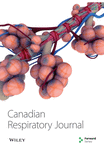Transition from Intravenous Epoprostenol to Oral or Subcutaneous Therapy in Pulmonary Arterial Hypertension: A Retrospective Case Series and Systematic Literature Review
Abstract
BACKGROUND: Intravenous epoprostenol, a prostaglandin analogue, has been a mainstay of therapy for patients with advanced pulmonary arterial hypertension (PAH) since the early 1990s. This medication has multiple side effects, and sudden discontinuation is potentially associated with severe sequelae. Several recent case series have described the transition from intravenous to newer oral or subcutaneous therapies. A case series detailing the authors’ experience with such transitions, and a systematic lierature review is presented.
METHODS: All consecutive PAH patients seen at the Vancouver Pulmonary Hypertension Clinic (Vancouver, British Columbia) between June 1995 and July 2009 were reviewed for cases in which weaning or transition from intravenous epoprostenol was attempted. The Cochrane Collaboration, Cochrane Register of Controlled Trials, Journals@Ovid, MEDLINE, EMBASE and Papers First were searched using predefined key words for publications describing transition of PAH patients from parenteral prostanoids to oral or subcutaneous agents.
RESULTS: Of the six patients who attempted, all transitioned successfully to oral or subcutaneous agents, having been on intravenous epoprostenol for a mean of 3.8 years (range 1.8 to 9.75 years). Five are living, surviving a mean of 5.5 years after transition. The literature search yielded nine studies and, of 127 patients described, 82 transitioned successfully. The length of pretransition prostanoid treatment (range 1.7 to 7.6 years) and the post-transition follow-up period (range two months to 70 months) were shorter than for patients described in the present study.
CONCLUSIONS: Given the rarity of PAH, the absolute numbers of patients transitioned from intravenous epoprostenol are still low. With the advent of new therapies, these numbers will hopefully increase; continued study is necessary to identify factors that are predictive of success.




